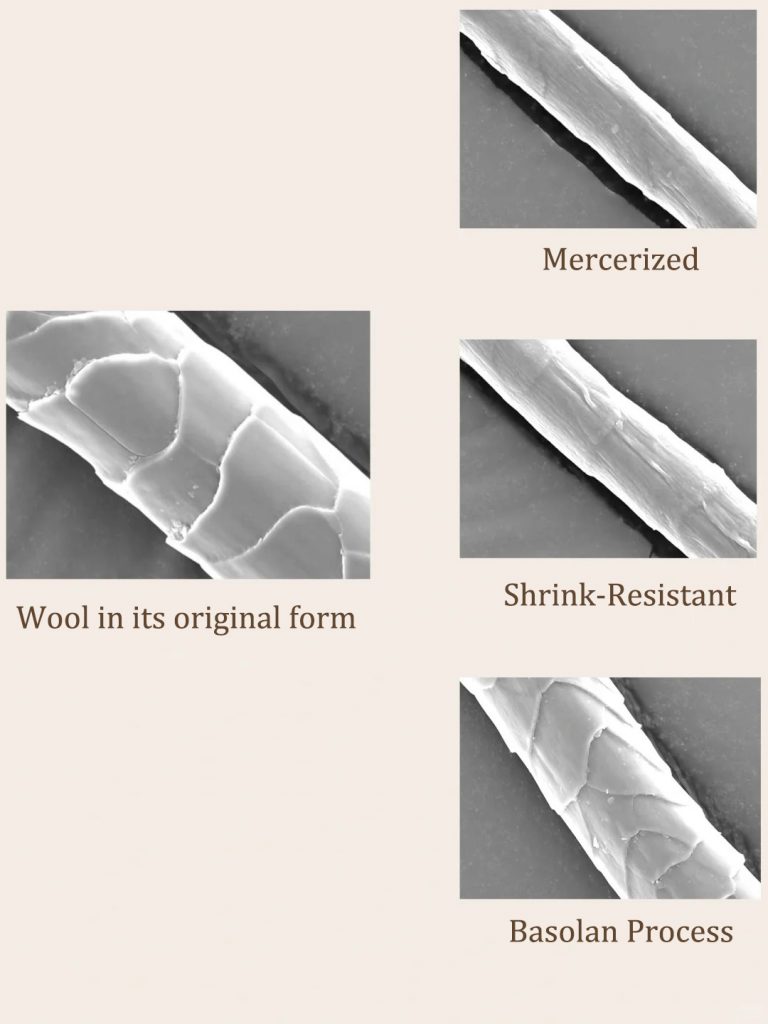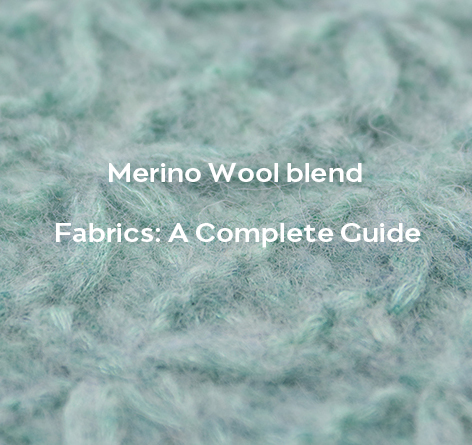When it comes to men’s fashion, selecting yarns that offer comfort, durability, and style is key. Wool and wool blend yarns stand out as exceptional choices. These materials not only enhance the aesthetic appeal of men’s clothing but also offer numerous health and environmental benefits. This article explores the advantages of wool and wool blend yarns, common types of wool, popular wool blends, and their suitability for different seasons and price ranges.
1.Types of Wool
A. Australian Wool
Australian wool is produced in Australia, known for its high quality and consistency. It serves as a fundamental wool type widely used in various applications.
B. Merino Wool
Merino wool is highly valued for its fine, soft fibers. It is incredibly breathable, moisture-wicking, and temperature-regulating, offering year-round comfort.
C. Basolan Wool
Basolan wool undergoes the Basolan treatment process, where the wool scales are partially removed. This treatment retains the wool’s natural charm while enhancing its washability and shrink resistance.
D. Shrink-Resistant Wool
Shrink-resistant wool has its scales entirely removed, preventing the wool from shrinking. It is often used in garments that require frequent washing without losing shape.
E. Mercerized Wool
Mercerized wool undergoes deep processing that involves covering the surface with materials like silk oil to achieve a dry and smooth feel. This treatment results in a more luxurious and silky touch.
F. Machine Washable Wool
Machine washable wool, also known as shrink-resistant wool, has a shrinkage rate of less than 1%. While it indicates low shrinkage, it does not guarantee resistance to pilling.
2. Wool Quality Classification
Wool yarn quality is classified into several grades:
– 60S Wool Yarn
– 70S Wool Yarn
– 80S Wool Yarn
– 90S Wool Yarn
– 100S Wool Yarn
– 110S Wool Yarn
– 120S Wool Yarn
– 130S Wool Yarn
– 140S Wool Yarn
The “S” number indicates the fineness of the wool fiber. Higher numbers represent finer and softer wool, making the yarn more luxurious and comfortable.
3. Wool Blends
Wool blends combine wool with other fibers to enhance certain properties such as durability, elasticity, or cost-effectiveness. Here are a few common wool blends and their benefits:
A. Wool-Polyester Blend
Combining wool with polyester improves the yarn’s durability and reduces its cost. Polyester adds wrinkle resistance and easy maintenance, making this blend ideal for everyday wear and travel.
B. Wool-Nylon Blend
The addition of nylon to wool increases the yarn’s strength and elasticity. This blend is often used in activewear and performance garments due to its durability and quick-drying properties.
C. Wool-Cotton Blend
Mixing wool with cotton combines the best of both fibers. Cotton adds breathability and a softer feel, while wool brings warmth and resilience. This blend is great for transitional seasons like spring and autumn.
D. Wool-Silk Blend
Wool and silk blends result in luxurious yarns that are soft, lightweight, and breathable. Silk’s natural sheen complements wool’s insulating properties, making it perfect for formal wear such as suits and blazers, of course also perfect for knitwear spring and autumn.
E. Wool-Cashmere Blend
Blending wool with cashmere combines the durability of wool with the supreme softness of cashmere. This blend offers warmth, comfort, and a touch of luxury, making it suitable for premium knitwear and accessories.
4. Seasonal Suitability
**Spring and Summer
For warmer seasons, lighter wool blends such as wool-cotton and wool-silk are ideal. These yarns are breathable, moisture-wicking, and provide comfort without overheating.
**Autumn
During the transitional weather of autumn, mid-weight yarns like Merino wool and wool blends with cotton or polyester are perfect. They balance warmth with breathability, making them suitable for layering.
**Winter
In colder months, heavy and insulating yarns like pure wool, wool-alpaca, or wool-cashmere blends are essential. These materials provide excellent heat retention and are perfect for sweaters, coats, and scarves.
5. Pricing Tiers
The price of wool and wool blend garments varies widely based on the quality of yarn, the complexity of the knit, and the final application. Here’s a basic breakdown of the different price tiers:
A. Entry-Level (Economy)
Wool-Polyester Blends: These blends are cost-effective and durable. Ideal for everyday items such as sweaters for mass market.
Common Wool: Basic wool items that provide the fundamental benefits of wool at a lower cost. These are great for budget-conscious buyers.
B. Mid-Range
Merino Wool: Known for its high quality and comfort, Merino wool is often used in mid-range fashion items that balance cost and luxury.
Wool-Cotton Blends: High-quality blends that offer excellent breathability and comfort, suitable for both casual and semi-formal wear.
C. High-End (Premium)
Cashmere and Cashmere Blends: These offer supreme softness and luxury, commonly found in high-end knitwear and winter accessories.
Wool-Silk Blends: Luxurious blends perfect for formal wear like suits and coats, offering a lustrous finish and excellent temperature regulation.
6.Benefits of Wool and Wool Blends
A. Comfort and Breathability
Wool and wool blends are inherently breathable, allowing air to circulate and moisture to evaporate. This property keeps you cool in summer and warm in winter, offering comfort in any season.
B. Moisture-Wicking and Odor Resistance
Wool fibers can absorb a significant amount of moisture without feeling wet. This moisture-wicking ability helps keep the skin dry and reduces odors, making wool garments ideal for activewear and travel.
C. Durability
Wool and its blends are known for their durability. Wool fibers can bend and recover from their original shape, making garments resistant to wear and tear.
D. Sustainability
Wool is a natural, renewable fiber, and wool production has a lower environmental impact than synthetic fibers. Purchasing wool garments contributes to sustainable fashion practices.
E. Hypoallergenic Properties
Wool and alpaca wool are hypoallergenic, making them suitable for people with sensitive skin or allergies. These materials do not cause skin irritation, ensuring wearer comfort.
F. Natural Insulation
Wool’s natural crimp creates air pockets that provide insulation and retain heat. This makes wool garments excellent for cold-weather protection.
G. UV Protection
Wool offers natural UV protection, shielding your skin from harmful sun rays. This makes it a great choice for summer clothing and outdoor activities.
7. Incorporating Wool into Modern Men’s Fashion
With the increasing demand for eco-friendly and sustainable fashion, wool and wool blends have made a significant comeback in modern men’s fashion. Here are some popular wardrobe staples:
A. Wool Suits
High-quality wool suits are prized for their durability and elegance. They offer a perfect balance between formal aesthetics and comfort, making them ideal for business and special occasions.
B. Wool Sweaters
From chunky knits to fine-gauge cardigans, wool sweaters are versatile and warm. They can be layered over shirts for a smart-casual look or dressed up with trousers for formal wear.
C. Wool Coats
Wool coats, including peacoats and trench coats, are classic outerwear choices that provide warmth and sophistication. They are perfect for winter and fall, offering both style and functionality.
D. Wool Accessories
Hats, scarves, gloves, and socks made from wool or wool blends add an extra layer of warmth and comfort. These accessories are essential for braving the cold while complementing your outfit.
E. Athleisure and Activewear
Wool blends, especially those mixed with performance fibers like nylon or polyester, have become popular in athleisure and activewear. They offer comfort, durability, and moisture management, making them ideal for workouts and casual wear.
8.Conclusion
Wool and wool blend fabrics offer numerous benefits for men’s clothing, combining unrivaled comfort and durability with eco-friendly and stylish appeal. By understanding the different types of wool and the benefits of various blends, you can select the ideal garments for any occasion and season. As the fashion industry increasingly emphasizes sustainability, wool remains a timeless and versatile choice, ensuring both style and practicality.
Whatever your needs—whether it’s a luxurious wool sweater, a durable wool-blend coat, or a cozy pair of wool socks—wool and its blends provide options tailored to diverse needs and preferences. Wool is incredibly versatile and effortlessly complements any wardrobe style.
Take Action Now: Interested in finding the perfect wool yarn for your project? Please contact us to discuss your tech packs and we will recommend the best wool or woolblend yarn to best suit your requirements free of charge. Get in touch for personalized recommendations and a quote, and unlock the potential of wool in your designs!





